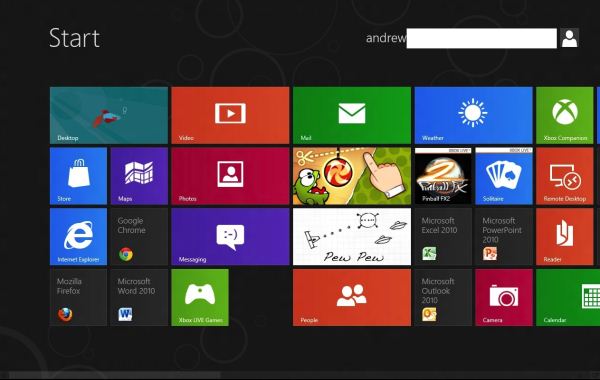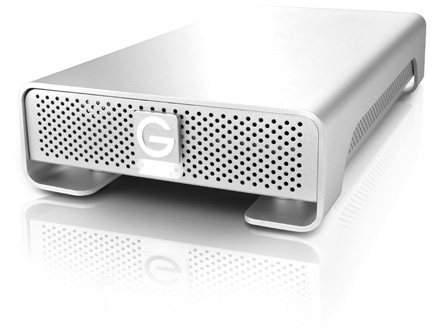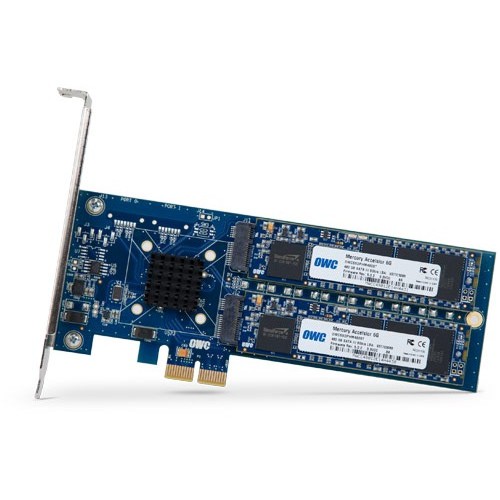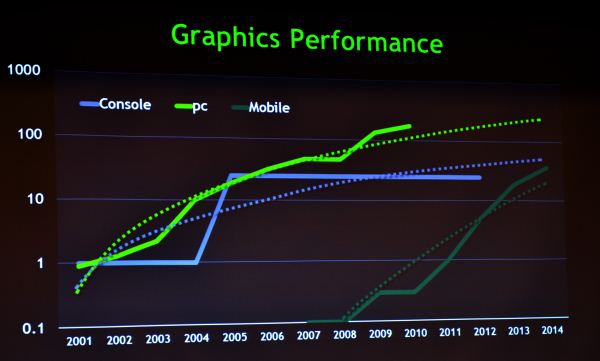Results 1,791 to 1,800 of 12094
Thread: Anandtech News
-
04-16-12, 03:30 PM #1791
Anandtech: Sprint makes its Galaxy Nexus Variant Official - $199 with $40 Google Wall
In a move that shouldn't be surprising to anyone, Sprint has made a Galaxy Nexus variant tailored for its own CDMA2000 and LTE network official in an announcement today. Back in January, news of its upcoming Galaxy Nexus variant was leaked through an online Ad placement, and back then the copy included mention of a 1.5 GHz SoC.
The official announcement today brings the Sprint Galaxy Nexus' OMAP4460 clock down to 1.2 GHz, same as its GSM/UMTS (International - maguro) and CDMA/LTE (Verizon - toro). The thought back then was that Sprint would run the SoC at its maximum specified clocks to keep the variant fresh and exciting, no doubt battery concerns and the realities of engineering resulted in it being scaled back.
The Sprint Galaxy Nexus (CDMA/LTE) model includes support for 5MHz FDD-LTE only on PCS 1900 (LTE Band 25) and no doubt will use the same combination of Samsung's CMC221 baseband for LTE and a Via CBP-7.1 for 1x/EVDO. Interestingly enough the antennas appear to have been moved around compared to the Verizon CDMA/LTE model.
Preorders have already started on Sprint's own microsite for the device. As mentioned in the headline, Sprint is selling the Galaxy Nexus for $199 on two year contract, but also giving users a $40 Google wallet credit within three weeks.
Source: Sprint, Sprint Fact Sheet, Sprint Preorder Site
More...
-
04-16-12, 07:00 PM #1792
Anandtech: Radeon HD 7000 Series Price Cuts & Promos Announced
For those of you in the market for a new video card, some price relief is on its way. Earlier today AMD sent out an announcement that they’ll be dropping the price on half of the Radeon HD 7000 series lineup, bringing prices down at both the top and bottom ends of their product stack.
With the launch of the GeForce GTX 680 AMD lost their performance lead in the high-end market – and thereby losing their ability to charge top dollar – so this adjustment has been expected. However it’s a pleasant surprise to see it this soon since the GTX 680 is still significantly supply constrained. We weren’t expecting to see this price cut until the GTX 680 supply improved, as AMD is still the only option when it comes to readily available cards.
Altogether AMD will be reducing the prices on 3 of their 7000 series cards: the 7970, the 7950, and the 7770. The 7970 will be dropping by $70 from $549 to $479 – below the GTX 680 – while its lower tier counterpart the 7950 will be dropping $50 from $449 to $399. Meanwhile the 7770, which was undoubtedly the worst priced member of the 7000 series, will be seeing a price drop of $20 to bring it from $159 to $139.
For the 7900 series the price cuts will be part of a two pronged approach by AMD to drive 7900 series sales. The other change is that AMD will be significantly increasing the amount of software that comes with these cards in what AMD is calling their Three For Free promotion. Currently most major retailers include a free copy of DiRT 3 with their 7900 cards; AMD will be replacing that promo with Three For Free, which will be a trio of games: DiRT Showdown, Nexuiz, and Deus Ex: Human Revolution plus The Missing Link DLC.Spring 2012 Radeon HD 7000 Series Price Cuts Card Old MSRP New MSRP Radeon HD 7970 $549 $479 Radeon HD 7950 $449 $399 Radeon HD 7870 N/A $349 Radeon HD 7850 N/A $249 Radeon HD 7770 $159 $139 Radeon HD 7750 N/A $109
Deus Ex was one of AMD’s major partner games from last year, while DiRT Showdown and Nexuiz are games that will not be released until next month. The inclusion of unreleased games is a bit odd, but considering that we’re just getting out of the post-Christmas game slump AMD’s options were either this or to include more 2011 games that many potential customers may already have. In any case, as with past AMD promotions these games will be given away via Steam keys.
Ultimately AMD has done enough to make the 7900 series once again competitive against the GTX 680, though how competitive is going to depend on how much you value AMD’s game bundle. A larger price cut would be a more straightforward value proposition, but AMD is better off adding value through the inclusion of games than further eroding their margins. Meanwhile the 7770’s new price is a welcome relief from its poor launch pricing, and while it’s still as expensive as the faster 6850 it’s no longer indefensibly overpriced for buyers looking to get a 28nm card. The only real odd man out here is the 7800 series; the 7850 is fine, however at $350 the 7870 is very close to the 7950, which could be bad news for one of those cards.Spring 2012 GPU Pricing Comparison AMD Price NVIDIA $499 GeForce GTX 680 Radeon HD 7970 $479 Radeon HD 7950 $399 GeForce GTX 580 Radeon HD 7870 $349 $299 GeForce GTX 570 Radeon HD 7850 $249 $199 GeForce GTX 560 Ti $169 GeForce GTX 560 Radeon HD 7770 $139
Both the price cuts and the Three For Free promo should be starting today. We’re already seeing the prices come down on some Radeon cards with the rest soon to follow, however none of AMD’s e-tail/retail partners have started the promo yet. So you may want to hold off on any 7900 purchases until the promo starts.
More...
-
04-16-12, 07:30 PM #1793
Anandtech: Microsoft Announces Windows 8 Product Editions
Microsoft Communications Manager Brandon LeBlanc has finally given us our first official information about product editions for Windows 8, which is now confirmed to be the product's actual shipping name. For 32-bit and 64-bit PCs, there will be two editions of the operating system: Windows 8, which is roughly equivalent to Windows 7 Home Premium, and Windows 8 Pro, which is analogous to Windows 7 Ultimate. Windows on ARM, now called Windows RT, is a standalone product with roughly the same feature set as the standard Windows 8 product. Windows 8 Pro is a superset of Windows 8, including all of its features plus business and power user-oriented features like Bitlocker, EFS, the ability to boot from VHDs and host Remote Desktop sessions, the ability to join Active Directory domains. Some of these features had previously been restricted to the Ultimate/Enterprise product tier in Windows 7, and it's nice to see everything trickling down to what should hopefully be a cheaper product (though Microsoft has not yet released details about Windows 8 pricing).
Windows 8 Enterprise will still exist as a separate product available to customers with Software Assurance volume licensing agreements with Microsoft. LeBlanc noted that Windows 8 Enterprise would include features that "enable PC management and deployment, advanced security, virtualization, new mobility scenarios, and much more," but it's not certain whether these will manifest themselves as new features within Windows 8 or as additional add-ons and programs available to enterprise customers separately. Windows 7 Enterprise was functionally identical to Windows 7 Ultimate except for its support of volume license keys.
This is as simple as the WIndows product stack has been since Windows XP was introduced in Home and Pro editions in 2001, replacing Windows Me and Windows 2000 and bringing both the home and professional Windows products onto the same Windows NT codebase. Windows Vista split the lineup into four different commercially available editions - Home Basic, Home Premium, Business, and Ultimate - whose feature sets were often confusing and poorly defined. It's nice to see some semblance of simplicity restored six years later. For a full list of features included in each edition, the original blog post is linked below.
Source: Windows Team Blog
More...
-
04-17-12, 12:00 AM #1794
Anandtech: HP Folio 13 Review: Deviating From the Norm
The initial bum rush of ultrabooks resulted in, with limited exception, a lot of designs that took most of their cues from Apple's MacBook Air. Even Dell's XPS 13, otherwise very different from what came before it, still maintained that wedge shape. Yet HP went a bit of a different route with their Folio 13 and demonstrated the same kind of outside the box thinking that many of the larger vendors are demonstrating these days.
HP's engineers took a look at Intel's ultrabook spec and, rather than see how small they could get their design, opted to see just how much they could pack into the spec. The result is the Folio 13, an ultrabook designed to bridge their consumer and business lines and offer the best an ultrabook can offer. Read on to see where it succeeds and where it could still use some help.
More...
-
04-17-12, 01:00 AM #1795
Anandtech: AMD's Godfrey Cheng Joins Rick Bergman at Synaptics
A couple of weeks ago one of my oldest friends in the industry, Godfrey Cheng, announced his resignation from AMD. Godfrey came over from the ATI side of the house to be a Director of Technical Marketing for AMD's client technologies. In the past I worked with Godfrey on everything from All in Wonder to UVD to CrossFire. Today I just got word that Godfrey joined Rick Bergman, another ex-AMDer, at Synaptics as a VP of Marketing.
I never quite understood the move to Synaptics, even when Bergman made it, until Godfrey's call to me today. He brought up an interesting point. A couple of years ago I wrote about an internal AMD project to build a first-generation Holodeck by 2016. The project was spearheaded by another ex-AMDer, Carrell Killebrew. At the time I was focused mostly on the compute aspects of making it happen, but Godfrey and Bergman's move to Synaptics finally clicked with me today.
I was in an unrelated meeting earlier today where I was discussing an extremely compute intensive problem with an engineer. Much to my surprise, the engineer told me that the problem we were discussing didn't require more compute than we had available today - it just needed an unbelievable amount of memory. In other words, the innovation necessary to solve this particular problem was secondary to compute.
That brings me to the Holodeck and a recent trend in the sort of innovation we've seen in the computing industry. The hard computing problems will continue to be solved by the AMDs, Intels and NVIDIAs of the world, but they've done such a good job over the past decade that the auxiliary players will now need to start playing a bigger role. We've seen this with the rise in importance of display technologies, but I suspect that companies like Synaptics that build touch and human interface controllers will also have the opportunity to move into the spotlight. Whether or not they do is another question, but the need for better interface technologies will only increase in the coming years.
I'm sure Synaptics pays well enough to attract good folks from companies like AMD and elsewhere, but I have to believe that a a not insignificant part of Godfrey and Bergman's decisions were motivated by the potential for a company focused on the human interface side of the problem.
Good luck and we'll be here to cover the progress.
More...
-
04-17-12, 01:00 PM #1796
Anandtech: Hitachi G-Technology Releases G-RAID Thunderbolt Storage Solution
G-Technology, a company owned by Hitachi, has released an updated model of their G-RAID solution, which now adds Thunderbolt support. Essentially the G-RAID Thunderbolt is equivalent to the regular G-RAID but features two Thunderbolt ports instead of the eSATA, FireWire, and USB ports that are found in the regular version. From inside they are the same: both utilize two SATA 3Gb/s Hitachi Deskstar hard drives, which can be configured in either RAID 0 or RAID 1 mode.
Typical of most Thunderbolt devices, the G-RAID Thunderbolt has two Thunderbolt ports to enable daisy-chaining. G-Technology quotes a sustained throughput of 280MB/s, but since the performance of hard drives is heavily dependent on the areal density, the maximum performance of the 4TB and 6TB models is likely slower.G-Technology G-RAID Thunderbolt Specifications Capacity 4TB 6TB 8TB Drive Configuration 2x2TB 2x3TB 2x4TB Rotational Speed 7200rpm 7200rpm 7200rpm Cache 2x32MB 2x64MB 2x64MB Ports 2x Thunderbolt Performance Up to 280MB/s Price $700 $850 $1000
StorageReview is also reporting that they saw an unreleased G-DRIVE with Thunderbolt support. G-DRIVE is G-RAID's little brother that has a single 3.5" hard drive. Unfortunately, there is no information on its specifications or availability.
There are quite a few Thunderbolt products out there so let's recap the external Thunderbolt storage offerings quickly. Right now there are five brands with products available for the masses: Promise, LaCie, Western Digital, Seagate and G-Technology. Most of these are external storage solutions with two or more hard drives, but there are simpler products like Seagate's GoFlex adapter that turns any GoFlex drive into a Thunderbolt drive. The table below compares products from the aforementioned companies:
If we only look at price per GB, Seagate's GoFlex Desk drives with the Thunderbolt adapter are the cheapest--especially the 3TB and 4TB models are very affordable when compared to other options. However, keep in mind that GoFlex Desk drives feature only a single 3.5" hard drive, whereas all other solutions have at least two 2.5" or 3.5" drives. Running two drives in RAID 0 increases the performance (particularly sequential transfer rates), hence the GoFlex Desk should be the slowest drives in the comparison.Comparison of Thunderbolt Storage Solutions Brand Promise LaCie Model Pegasus R4 Pegasus R6 Little Big Disk 2big Capacity 4x1TB 4x2TB 6x1TB 6x2TB 2x500GB 2x1TB 2x120GB SSD 2x2TB 2x3TB Throughput 500MB/s 800MB/s 180MB/s 190MB/s 480MB/s 327MB/s Price $1149 $1799 $1799 $2499 $450 $550 $850 $600 $750 Warranty Two years Three years Brand Western Digital G-Technology Seagate Model My Book Thunderbolt Duo G-RAID GoFlex Desk (w/ TB adapter) Capacity 2x2TB 2x3TB 2x2TB 2x3TB 2x4TB 1TB 2TB 3TB 4TB Throughput 225MB/s 250MB/s 280MB/s N/A Price $555 $660 $700 $850 $1000 $320 $350 $370 $440 Warranty Three years Three years Two years
3.5" hard drives top out at 4TB at the moment and thus one has to look into multi-drive solutions if more than 4TB is needed. At 6TB, Western Digital's My Book Thunderbolt Duo series offers the best price/capacity ratio. In terms of performance, however, it's rated as slower than G-Technology's and LaCie's offerings--though we need to emphasize that the performance ratings are from manufacturers' sites and may hence not be completely accurate.
G-Technology's advantage is the fact that they are the only company (along with Seagate) that is using 4TB hard drives. As Seagate does not offer any dual-drive solutions, G-Technology is the only company that offers an 8TB dual-drive product. $1000 is definitely expensive but it's $800 less than what Promise asks for their 8TB version of the Pegasus R4. However, Promise uses four 2TB drives and there is support for RAID 5 and 6 as well, so Pegasus and G-RAID aren't strictly comparable.
All in all, there are definitely a lot more products than there were a bit over a year ago when Thunderbolt launched, but personally I expected more. It has been over a year and yet the cheapest Thunderbolt storage solution will still set you back over $300. I give Seagate credit for bringing an adapter to the market instead of dedicated products like other manufacturers, but $190 for an adapter (or $100 for the 2.5" adapter) is an awful lot. For $190 you can get a 3TB USB 3.0 hard drive that will perform the same due to the fact that the hard drive is the bottleneck. Of course, the advantages of Thunderbolt lie elsewhere but given the current products, most of Thunderbolt's potential is being missed.
More...
-
04-18-12, 03:30 PM #1797
Anandtech: OWC Releases Mercury Accelsior PCIe SSD
OWC has released their first PCIe SSD, the Mercury Accelsior. OWC has used SandForce controllers throughout its history in the SSD world and the Accelsior is no exception. It is equipped with two SandForce SF-228X controllers, which are the same controllers that can be found inside OWC's other SATA 6Gb/s SSDs.
The actual design is pretty interesting. OWC has opted to build the SSD out of two blades, each with their own controller and NAND running. The blades run in RAID 0 by default but they can also be configured in RAID 1 mode. Oftentimes everything is intergrated on one PCB but OWC's approach is different, and there is actually a big advantage todoing things this way. Using blades allows the capacity to be upgraded without buying a totally new card. OWC does not sell the blades separately yet, but manufacturing new blades should be somwhat cheaper than manufacturing the whole PCB, so down the road this could result in a lower total upgrade price.
OWC's Mercury Accelsior is actually a very competitive drive. A quick look at NewEgg shows that OCZ's RevoDrive 3 is not significantly cheaper--in fact, it's more expensive at 480GB and above. OCZ does claim better performance but it's good to keep in mind these figures meant for advertising.OWC Mercury Accelsior Specifications Capacity 120GB 240GB 480GB 960GB Controller Dual SandForce SF-2281 Dual SandForce SF-2282 NAND 24nm Toshiba Toggle-Mode MLC NAND Interface PCI Express 2.0 x2 Form Factor Low Profile PCI Express Sequential Read 758MB/s 762MB/s 780MB/s 756MB/s Sequential Write 743MB/s 763MB/s 763MB/s 673MB/s 4K Random Read Up to 100K IOPS 4K Random Write Up to 100K IOPS Price $360 $530 $930 $2096 Warranty 3 years
OWC is primarily an Apple focused company and here is the big deal: Mercury Accelsior supports booting under OS X. There are plenty of PCIe SSDs out there but OWC's is the first one that supports booting into OS X. No drivers are needed in OS X or Windows either--the drive is plug and play. Booting into Windows has not been a problem but it's understandable that a Mac user has little need for a PCIe SSD that only boots into Windows. Unfortunately Mac Pro is the only Mac that has empty PCIe slots and Apple has not shown much love for the Mac Pro lately.
Availability for the Mercury Accelsior line starts now, though only the linked prices above are currently showing up online.
More...
-
04-19-12, 05:00 PM #1798
Anandtech: Thecus and McAfee Partner for Antivirus Technology in Intel-based NAS Syst
Thecus announced a partnership with McAfee at CeBIT 2012 to bring antivirus technology to their lineup. On April 16th, Thecus announced that that Thecus NAS systems would start shipping with McAfee antivirus technology. We also covered the release of Thecus's TopTower lineup, where it was briefly mentioned that McAfee's anti-virus module would be part of the shipping firmware. Today, we have more details.
Antivirus Technology in NAS Systems - A Brief History
NAS vendors have realized that anti-virus technology is fast becoming one of the must-have features in their firmware and antivirus vendors have only been too eager to spread out their reach. Users of some of Netgear's ReadyNAS solutions have been able to run the open source ClamAV antivirus since 2008, but it has never been an official feature.
Symantec, one of the leading antivirus vendors, has restricted its offerings to enterprise NAS systems, leaving the fast-growing SMB and SOHO NAS markets free for other vendors to enter. Trend Micro was one of the first to have an antivirus solution for SMB NAS systems. Buffalo Technology adopted them for some of their NAS models. QNAP was next with the open source ClamAV solution becoming part of the TurboNAS v3.5 firmware. Last month, Synology delivered the first Antivirus Essential pack for users running firmware version DSM 4.0 or later. Antivirus Essential internally uses the ClamAV engine. Thecus is the latest to join the list of NAS vendors with an antivirus solution as part of their firmware.
Thecus and McAfee Join Hands
Thecus's partnership with McAfee brings a host of things to the table.
As per the press release, the following features are worth mentioning:
- Comprehensive detection so threats are isolated before they can spread
- Removal of viruses, worms, and other malicious code
- Reliable and accurate detection, without a costly false-alarm problem
- Effective scanning of compressed, archived, and packed files
- Support for a wide range of platforms
- Scan engine SDK for easy integration into third-party applications
Of course, AnandTech readers are interested in the aspects which are not mentioned in the official PR. We contacted Thecus for some clarifications, and got the following information:
- Despite the fact that Thecus advertises all NAS systems shipping after April 16th as having the McAfee antivirus module, it is only Intel-based NAS systems with firmware version v2.02.x and above that will support it. In terms of bundling, only the N6/8/10 series will have it as part of the firmware. The McAfee module will become available for users of other supported NAS systems to download towards the end of this month.
- Unlike Buffalo Technology's subscription based model for the Trend Micro engine and antivirus definitions, the McAfee antivirus is offered free of charge to Thecus's customers. However, virus definition updates are available only for 3 years per bundled system.
- Thecus assures us that the McAfee module has very limited impact on NAS performance as specific folders can be targeted for scheduled scanning. It is not clear whether this means that real time protection is unavailable.
- Compared to ClamAV v0.96, Thecus claims that the McAfee module on a similarly spec-ed NAS system is 12x more efficient in terms of time spent in scanning a given file. A higher virus recognition rate (99% to ClamAV's 68%) is also claimed. Thecus also indicated that the McAfee module could scan files of upto 8 GB in size, while ClamAV could scan files of upto 2 GB in size only (though I haven't been able to confirm independently whether ClamAV's StreamMaxLength parameter is restricted to 2 GB only).
On the whole, the tie-up between Thecus and McAfee is quite interesting. It remains to be seen whether McAfee would be interested in getting their engine ported over to other NAS platforms (ARM / PowerPC based) and vendors. The fact that McAfee is now part of Intel might play a role, but that also provides some scope for deeper integration with Intel's NAS platforms in the future.
More...
-
04-19-12, 07:00 PM #1799
Anandtech: NVIDIA Plots Mobile SoC GPU Performance, Surpassing Xbox 360 by 2014
Qualcomm was the first to tell us that it expects to offer console level GPU performance in the not too distant future, generally hinting that its Adreno 3xx GPUs would get us there. NVIDIA shared this slide (pictured above) with us today that gives its take on where PC, console and mobile GPU performance will land over the coming years. There's nothing too revolutionary here but it does provide an interesting visual for much of what the GPU vendors have been talking about for the past couple of years.
The solid lines are estimated performance, while the dotted lines are trends. According to NVIDIA, somewhere in the 2013 - 2014 timeframe is when we'll get Xbox 360-class GPU performance out of mobile SoCs. The console line only has two points (Xbox 1 and Xbox 360), while the mobile line starts with the original iPhone, moves up to Tegra 2 and then follows Tegra 3.
More...
-
04-20-12, 02:30 AM #1800
Anandtech: AMD Q1’12 Earnings Report: $1.59B Revenue, $590M Net Loss
It’s the middle of April and that means it’s once again earnings season for the prior quarter.
Late yesterday AMD released their earnings report for Q1 2012, and it turned out to be a bit of a doozy. For the quarter AMD brought in $1.59 billion in revenue, with a net loss of $590 million. This is compared to $1.61B in revenue and a $510M net profit in Q1 of 2011, meaning AMD’s revenue is slightly down on a year-over-year basis, while their net income went well into the red.
Overall, while things have been going modestly well for AMD lately thanks to the strength of their product lineup, their stake in Global Foundries has continued to drag down the company’s profits. In Q4’11 AMD had to take $209 charge that drove them into the red then, and Q1’12 has not fared any better.AMD Q1 2012 Financial Results Q1'2012 Q4'2011 Q1'2011 Revenue $1.59B $1.69B $1.61B Net Income -$590M -$177M $510M
As you may recall, last month AMD fully divested themselves of Global Foundries, eliminating their 8.8% share of the company. This divestment was part of a larger revision of AMD’s wafer agreement with GloFo, which saw AMD giving up their share in the foundry as part of a larger payment to GloFo in order to get out of a previous exclusivity agreement with GloFo that had entitled them to production rights on some 28nm APUs.
The good news of course is that AMD’s GloFo-related financial troubles are almost at and end now that they no longer hold a stake in GloFo, with the bad news being that there are still a few more payments to go until they’re fully freed. On top of the $703M charge for Q1, AMD owes a further $275M to GloFo over the next year, with AMD choosing to write all of this off in their $703M charge for Q1. However once they’re paid off next year, that’s it – AMD will have no further financial ties to GloFo, with the only remaining ties being the contract fab work GloFo does for AMD.
In any case, not counting their problems with GloFo, AMD’s non-GAAP net income for Q1’12 would have been $92M, which is a small but notable increase over their non-GAAP net income of $56M in Q1’11. Even though revenues were down, AMD’s operating income from both GPUs and CPUs is up versus 2011, reflecting the higher gross margin attached to AMD’s latest generation of products.
In particular, on the CPU side of things the average sale price for AMD CPUs has held steady, but overall costs have come down slightly, making it a net win for AMD. CPU revenue for Q1’12 was $1.203B with an operating income of $124M, versus $1.2B and $100M for Q1’11. All things considered Bulldozer doesn’t seem to have lit a fire under AMD, and the lack of new APUs to replace Brazos isn’t helping, but at the very least AMD is holding their ground.AMD Q1 2012 Computing Solutions Division Financial Results Q1'2012 Q4'2011 Q1'2011 Revenue $1.203B $1.309 $1.2B Operating Income $124M $165M $100M
Meanwhile on the GPU side of things this was the first quarter where AMD’s new Southern Islands GPUs were shipping, which is both good news and bad news for AMD. Traditionally quarters where major new GPU architectures are introduced see lower revenue as customers hold off on purchases, and with the launch of Southern Islands early in the year this was no exception. However new GPUs also launch at higher prices, which pushes margins up. The net result is that while revenue takes a step back profits increase, which is exactly what AMD needs at the moment.AMD Q1 2012 Graphics Division Financial Results Q1'2012 Q4'2011 Q1'2011 Revenue $382M $382M $413M Operating Income $34M $27M $19M
Altogether AMD booked $382M of GPU revenue in Q1’12 with an operating income of $34M, versus 413M in revenue with an operating income of only $19M in Q1’11. The increase in operating income over Q1’11 is thanks in large part to AMD’s nearly quarter-long 28nm product lead, combined with AMD’s conservative pricing. Q2’12 should see revenue improvements as AMD will have been shipping desktop SI GPUs for the entire quarter along with introducing mobile SI GPUs, however as we saw earlier this week AMD’s conservative pricing has already eroded due to a need for price cuts, meaning that AMD’s margins will likely be going down.
Moving forward, Q2’12 is widely expected to see the launch of AMD’s Trinity APU, which should give their CPU business a shot in the arm. At the same time we’re expecting AMD to finally launch Southern Islands products for the mobile market, which will be important for AMD as their mobile GPUs are high volume products.
More...
Thread Information
Users Browsing this Thread
There are currently 14 users browsing this thread. (0 members and 14 guests)






 Quote
Quote

.jpg)























Bookmarks